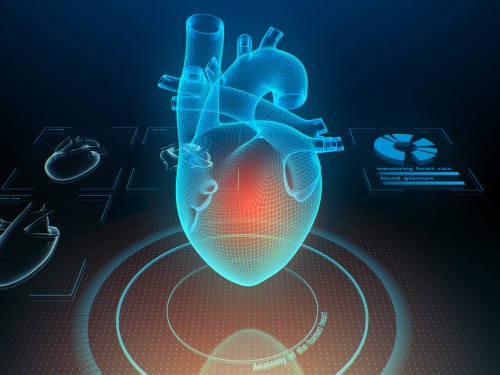



Get new exclusive access to healthcare business reports & breaking news




Using a 3D printer, a team of Israeli scientists have created, for the first time ever, a vascularized mini human heart. The artificially built organ fully matches the immunological, cellular, biochemical and anatomical properties of the human patient whose cellular material was used. The discovery brings new hope to cardiac patients everywhere, since the creation of a full-size human heart now seems closer than ever.
The global medical community has turned its attention, in recent years, to the 3D bioprinting market, which is the most promising when it comes to deciphering the code of successful organ transplants.
3D bioprinting has the ability to really disrupt the healthcare system, since its applications cover a wide range, from printing medical instruments and implants, which is already happening, to tissues and, hopefully in the future, organs. 3d printing is also soon expected to penetrate the pharmaceutical industry and curb animal testing.
The University of Arizona has received a $2 million grant to heal bone fractures using a combination of 3D printing and adult stem cells. This is a good example of how 3d printing can be used to really help reduce suffering and improve the quality of life. Renowned biomedical engineer, John A. Szivek, is working to help injured US veterans by creating 3D print scaffolds – plastic bone-shaped frames – to replace large, missing or broken bone segments.
The current heart 3D printed prototype had its predecessors right here in Chicago. Last July, Biolife4D, a Chicago-based company, announced it could bioprint human cardiac tissue.
More exactly, the Biolife4D scientists printed a human cardiac patch, containing the multiple cell types of which the human heart is comprised. The patch was then maintained alive.
The big step forward for the Israeli team was to successfully print blood vessels. Until now, scientists specializing in regenerative medicine – which uses biotechnology – have only successfully printed simple tissues with no blood vessels.
The big medical breakthrough at Tel Aviv University has just been published in the journal Advanced Science by team leader Prof. Tal Dvir, who was assisted by Nadav Noor, Dr. Assaf Shapira, Reuven Edri, Idan Gal and Lior Wertheim.
How was the 3D printed heart created?
Previously, cardiac tissue engineering had not yet succeed in producing thick vascularized tissues that fully matched with the patient. Here, a simple approach to 3D‐print thick, vascularized, and perfusable cardiac patches that completely match the immunological, cellular, biochemical, and anatomical properties of the patient is reported. This was done from the patient’s cellular material, obtained through a biopsy of an omental tissue. The cells obtained are then reprogrammed to become pluripotent stem cells, and differentiated to cardiomyocytes and endothelial cells. Meanwhile, the extracellular matrix is processed into a personalized hydrogel. The two different types of cells are then each combined with hydrogels to form bioinks for the cardiac tissue and blood vessels. The ability to print functional vascularized patches according to the patient’s anatomy is demonstrated.
Mathematical modeling of oxygen transfer within the heart tissue is then used to build the smaller blood vessels needed to oxygenate the heart. Further in vitro studies are used to assess cardiac cell morphology after transplant, as well as the structure and function of the tissue, revealing elongated cardiomyocytes with massive actinin striation. Finally, cellularized human hearts with a natural architecture are printed.
Cardiovascular disease is the leading cause of death in the developing world. About 610,000 people die of heart disease in the United States every year–that’s 1 in every 4 deaths.
Heart transplantation is now the only treatment for patients with end-stage heart failure. Since heart donors are rare, the need to develop new approaches to regenerate the diseased heart is urgent. This is why the 3D printed heart is so important.
“This is the first time anyone anywhere has successfully engineered and printed an entire heart replete with cells, blood vessels, ventricles and chambers,” said Dvir of the materials science and engineering department of TAU’s School of Molecular Cell Biology and Biotechnology, the Center for Nanoscience and Nanotechnology and the Sagol Center for Regenerative Biotechnology.
Further developing 3D printing techniques that are proved to work is very important, according to the authors.
“This heart is made from human cells and patient-specific biological materials. In our process these materials serve as the bioinks, substances made of sugars and proteins that can be used for 3D printing of complex tissue models,” prof. Dvir says. “People have managed to 3D-print the structure of a heart in the past, but not with cells or with blood vessels. Our results demonstrate the potential of our approach for engineering personalized tissue and organ replacement in the future.”
“We have to develop the printed heart further,” he concluded. “The cells need to form a pumping ability; they can currently contract, but we need them to work together. Our hope is that we will succeed and prove our method’s efficacy and usefulness. “Maybe, in 10 years, there will be organ printers in the finest hospitals around the world, and these procedures will be conducted routinely.”